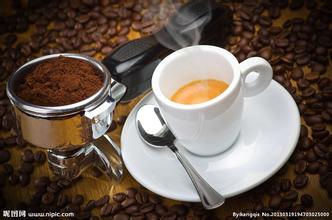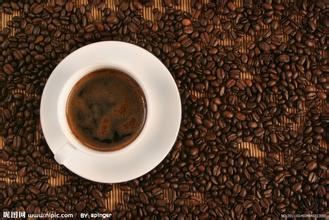Indonesia Coffee Estate Introduction Kahayangan Estate Indonesia Coffee
The coffee was discovered because stingy Dutch planters banned local workers from drinking coffee. In order to get the magical fruit they had worked so hard to grow, they had to find another way to find it in the excrement of civets. After cleaning and grinding, it was made into world-class coffee, which was then found by the Dutch and became more expensive. Bali, as Indonesia's main tourist destination, is often famous for its golden coffee in tourist brochures. In fact, this is the special item of Golden Mandheling coffee in Sumatra, Indonesia, also known as Golden Manning. In Sumatra, which probably escaped the disease in the past, Mantenin is one of the top coffees in the world. It is slippery and mellow, with a heavier taste and a longer aftertaste than Java coffee. It may not be as delicate as Java, but more ferocious. The trademark of the golden butterfly can be identified at the time of purchase.
There are also some plantations in Bali that have been turned into resorts, such as the Munduk Moding plantation, which has been turned into a luxury resort with spa. The resort is close to the Central Lake District of Bali and the Munduk Mountain Station, and the nearby hills are covered with forests, coffee trees and rice, with charming surroundings and rooms with local characteristics. In fact, Bali and other old plantations preserved in the sea today are now clustered in eastern Java, including Djampit, Blawan, Pancoer, and Kayumas4, all near the Ijen volcano on the Ijen plateau, where they have grown the same coffee from the 18th century to the present day. But Java is no longer that Java, and when it comes to Indonesian coffee, people talk more about Sumatran mantenin coffee, or the more magical coffee Kopi Luwak, the legendary civet coffee. Luwak coffee is known as the most expensive coffee in the world, mainly produced in Indonesia's Sumatra, Java and other islands, but it is so rare that civets swallow the coffee fruit and, after a "twist of sorrow", unexpectedly dissolve most of the bitterness, leaving more delicious coffee, which was only for Europe at that time, and had to undergo long-term sailboat transportation, which made the coffee less acidic and tastier. In the more developed period of shipping, businessmen had to put
Coffee is stored for several years to get a better taste, storage also brings higher prices, inferior quality, all kinds of smuggling is not uncommon. By the 1880s, Java coffee reached its peak, but the delicate Arabica coffee plant could not escape the plague. a rust hit many areas of Java, including Java, and large tracts of coffee trees died. at that time, only 1/10 Arabica coffee survived in Indonesia, mostly in Sumatra. Then the Dutch again brought Africa's stronger Robusta coffee, which was more resistant to diseases and insect pests, but tasted less than Arabica coffee, and the halo finally left Java. At that time, Europeans fought for Indonesian coffee, especially Java coffee, which tasted less bitter. Coffee with low acidity is described as: "good Java coffee has this property, it shows a relatively thick, slightly lighter and less acidic than some other Indonesian coffee." This coffee shows a rustic style and a long aftertaste on the whole, with a slight flicker of vegetation in the aftertaste. Compared with other Indonesian coffees, the finish is not that long, but it often contains a slightly spicy and smoky blend. Java coffee gives people an impression of sweetness as a whole, very soft and rich. " I don't know what Java coffee was like in its heyday, but I was excited when I read it.

Important Notice :
前街咖啡 FrontStreet Coffee has moved to new addredd:
FrontStreet Coffee Address: 315,Donghua East Road,GuangZhou
Tel:020 38364473
- Prev

Introduction of Sidamo Coffee Bean Flavor and Ted Manor
The coffee in Sidamo has a variety of flavors. Different soil types, microclimates and countless native coffee species, towering mountains, highlands, plateaus, valleys and plains, diverse topography, and the geology of the area belongs to nutrient-rich, well-drained volcanic soil. the depth of the soil is nearly two meters, and the surface soil is dark brown or brown. The biggest advantage of the place is that
- Next

Introduction to the characteristics of Arabica coffee beans in the producing area of Arabica coffee farm in Indonesia
The old plantations preserved today are now clustered in eastern Java, including Djampit, Blawan, Pancoer, and Kayumas4 plantations, all near the Ijen volcano on the Ijen plateau, who have grown the same kind of coffee from the 18th century to the present. But Java is no longer that Java. When it comes to Indonesian coffee, people talk more about Sumandra.
Related
- Does Rose Summer choose Blue, Green or Red? Detailed explanation of Rose Summer Coffee plots and Classification in Panamanian Jade Manor
- What is the difference between the origin, producing area, processing plant, cooperative and manor of coffee beans?
- How fine does the espresso powder fit? how to grind the espresso?
- Sca coffee roasting degree color card coffee roasting degree 8 roasting color values what do you mean?
- The practice of lattes: how to make lattes at home
- Introduction to Indonesian Fine Coffee beans-- Java Coffee producing area of Indonesian Arabica Coffee
- How much will the flavor of light and medium roasted rose summer be expressed? What baking level is rose summer suitable for?
- Introduction to the characteristics of washing, sun-drying or wet-planing coffee commonly used in Mantenin, Indonesia
- Price characteristics of Arabica Coffee Bean Starbucks introduction to Manning Coffee Bean Taste producing area Variety Manor
- What is the authentic Yega flavor? What are the flavor characteristics of the really excellent Yejasuffi coffee beans?

